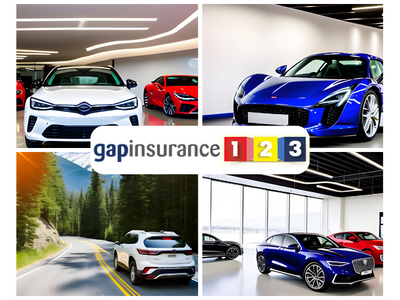Call Monday-Friday 9am - 6pm Closed Saturday & Sunday
Key Features to Look for in GAP Insurance for Leased Vehicles
GAP Insurance, also known as Guaranteed Asset Protection, is an important financial safeguard for anyone leasing a vehicle in the UK.
This article aims to serve as a comprehensive guide, outlining the key features you should consider when shopping for GAP Insurance cover for your leased car or vehicle.
We'll delve deep into each feature, providing insights that complement and expand upon the existing content on GAPInsurance123, a leading resource in the field of GAP Insurance.
The growing popularity of leasing a brand-new car
The growing popularity of leasing a brand-new car
There are many ways to fund a new vehicle. Hire purchase and bank loans were the original favourites for car buyers. Then in the late 1980's, motor manufacturers pushed a new style of car finance, the Personal Contract Purchase, as the solution for new car buyers.
Leasing a vehicle is not something new. However, leasing always seemed to be the preserve of businesses. Vans and company cars were nearly always leased and simply handed back at the end of the term in exchange for another brand new lease car of light commercial.
In the last few years, the popularity of a lease arrangement for private car users has grown. The simplicity of a set monthly rental payment has overtaken the common objection of not being able to own a lease car at the end.
When comparing options, leasing costs now appear attractive when compared to HP or PCP payments. The availability of good leasing deals to the public has turned popular opinion on its head.
The Growing Importance of GAP Insurance (1).png)
With rising interest rates and elevated levels of inflation, the pressure on people's finances has increased. In taking any form of finance on a brand-new car, there are a number of financial factors to consider.
These include:
-
Job loss,
-
Having a baby,
-
Becoming ill,
-
Seeing the car written off or stolen.
Ensuring that you have adequate protection for a lease has become important to many.
GAP Insurance can help in this regard, but what should you be looking for to make sure you are fully covered?
Why GAP Insurance is Important for Leased Vehicles
The Financial Risk
If your lease vehicle is written off or stolen during the term of the contract hire agreement, then you will be expected to pay off your lease settlement. This can be made up of the vehicle's residual value and some or all of your outstanding rental payments.
Your fully comprehensive car insurance policy can cover the market value of the car at the time of the claim.
This may not be enough to cover the lease settlement. If there is a shortfall, they can ask you to pay the difference and clear the lease.
The Financial Liability
Without GAP Insurance, you could be left with a substantial financial liability. You would still be responsible for the remaining payments on your lease contract, even though you no longer have the vehicle.
GAP Insurance protects you from this scenario, making it an essential feature in any lease deal.
The Residual Value Factor
One of the key aspects to consider when leasing a vehicle is its residual value. This is the estimated value of the car at the end of the lease term.
GAP Insurance ensures you're not left covering the difference between the residual value and the amount you still owe on your lease if your car is written off or stolen.
The Role of GAP Insurance
GAP Insurance serves as a financial safety net in such scenarios. It covers the "gap" between what your car insurance pays out and what you still owe on your finance or lease contract.
So, for example, if your car is stolen, your car insurance company will pay out the market value of the car. Let's say that is £20,000.
Your lease agreement is required to be settled. Let's say that settlement is £24,000.
The Lease & Contract Hire GAP Insurance can pay the shortfall, in this case £4,000, to ensure your lease is settled in full.
Key Features to Consider
Simple Cover
When it comes to GAP Insurance, the simpler, the better. Look for policies that offer straightforward coverage, paying the difference between your car insurer's settlement and the outstanding finance on your lease. GAPInsurance123 highlights the importance of policies where "no claim limit applies," offering you peace of mind.
GAP Insurance Claim limit
You want to ensure your Lease GAP Insurance policy has the ability to cover the potential shortfall on your lease. Many products have a maximum they will pay out, also known as the claim limit. If your shortfall exceeds this claim limit, you could still be left with something to pay.
Bear in mind your lease settlement decreases each time you make a payment. Your leased vehicle's residual value also decreases over time. The potential shortfall will fall between these two moving figures.
With GAPInsurance123, there is no claim limit where the monthly rentals on the lease are less than £750. If your monthly rentals are between £751 and £1000 a month the, the maximum claim limit is £25,000.
This should be more than enough for most contract hire lease arrangements.
Duration of Coverage
Most contract hire lease arrangements are for a fixed period between 2 and 4 years. At GAPInsurance123, we offer our Lease and Contract Hire GAP Insurance policies for up to 4 years of coverage for vehicles valued up to £100,000.
As you would expect to keep your vehicle for the entirety of the lease, the duration of the GAP cover you choose would be for the full length of the lease agreement.
You don't have to do this, but if you do take a shorter period of GAP Insurance cover, then your lease will run, and you may face a problem trying to get cover for the remainder.
Additional Features
Motor Excess deduction contribution 
When your car insurer makes a market value settlement to you, they can deduct an excess amount from your settlement.
Most good GAP Insurance policies will provide a contribution towards your motor insurers' excess deduction.
The GAPInsurance123 motor insurance excess contribution is up to £250.
Advanced Rental Protection
Many leases require an advanced rental payment upfront. For example, if you have a monthly rental of £300 and the lease is termed '9+36', then you will be making a £2700 advanced rental payment (9 X £300) followed by 36 monthly rentals of £300.
As these advanced rental payments are commonly required and can be substantial, you can take out optional 'Deposit Protection' cover with many Lease GAP Insurance products.
This means, that in the event of a claim, the standard Lease GAP cover can protect any shortfall payment in the lease. The optional Deposit Protection cover can provide you with your original advanced rental payment back, subject to the claim limit you select.
This allows you to use this deposit protection settlement as an advanced rental payment on your replacement vehicle.
Key Takeaways
Essential Features
In summary, when shopping for GAP Insurance for your leased vehicle, focus on policies that offer:
-
simple cover specifically suitable for a lease
-
have unlimited or substantial minimum claim limits
-
a contribution for your excess deduction with your motor insurer
-
a suitable duration of coverage
-
optional protection for your advanced rental payment
These are the cornerstone features that will provide you with comprehensive protection.
FAQ Section
Can I take out GAP Insurance anytime during my lease?
Probably not. Most GAP Insurance products must be taken within a set timeframe of getting your lease vehicle.
With GAPInsurance123, you must buy GAP Insurance for your lease within 180 days of the vehicle collection.
Is GAP Insurance recommended on a lease?
Absolutely, but it is also not compulsory. GAP Insurance is highly recommended for leased vehicles to protect against financial loss if the vehicle is written off or stolen. However, not everyone will see the benefit of Guaranteed Asset Protection Insurance for a lease vehicle.
Whether you need GAP Insurance is a choice for you. .png)
Why can't I take other types of GAP Insurance on a lease?
There are a number of types of GAP Insurance coverage available, but not all are suitable for a lease. Some types of GAP Insurance cover are reliant on the fact that you either own or have the option to own, the vehicle. Types of GAP cover that would need ownership options may include:
-
Finance GAP Insurance
-
Negative equity GAP Insurance
Contract Hire and Lease GAP Insurance is specifically designed not to require ownership options. It is understood that the purchase invoice and V5 document may not be in the leaseholders' name.
Can you extend the Lease GAP Insurance
Possibly? There are occasions when you may look to extend your lease, like when car delivery times were extended as a consequence of the COVID-19 pandemic.
As a result of this, we discussed the option of extending cover with our underwriters. We came up with our Top Up Contract Hire GAP. As long as your original Contract Hire GAP Insurance is with us, then we can offer a 12-month top-up policy to cover your shortfall on your lease.
Another good reason to take out Contract Hire GAP with GAPInsurance123 just in case you need to extend your lease.
Conclusion
GAP Insurance for leased vehicles is worth considering. It provides a financial safety net that can save you from significant financial distress. With the key features outlined in this article, you're now equipped to make an informed decision. So, don't delay; safeguard your financial future by considering GAP Insurance for your leased vehicle today.
Published 5/9/23, written by Mark Griffiths


